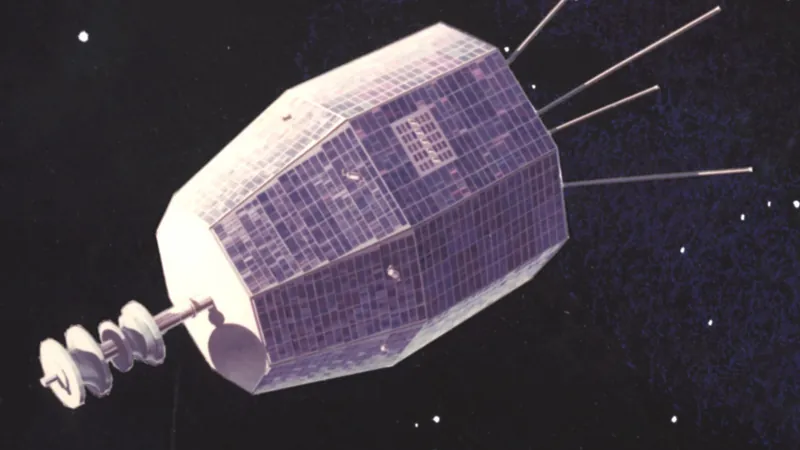
Is This Satellite a Zombie? Scientists Encounter a Mysterious Radio Burst from the Beyond!
2025-06-28
Author: Jia
A Cosmic Mystery Unraveled!
In a stunning revelation, scientists recently reported a fleeting radio burst that captured the attention of the astronomical community. Lasting only 30 nanoseconds, this enigmatic signal appeared to originate from the depths of another galaxy. But hold on, the plot thickens—what initially seemed like a cosmic triumph quickly spiraled into a bizarre twist that left everyone scratching their heads.
The Quest Begins with ASKAP.
Using the Australian Square Kilometre Array Pathfinder (ASKAP) radio telescope, researchers aimed to detect fast radio bursts (FRBs), elusive signals that have puzzled scientists since their discovery two decades ago. However, excitement turned to confusion when the team discovered the signal’s characteristics defied explanation.
A False Alarm or Something Spooky?
Typically, FRBs last for milliseconds, but this particular signal was shockingly short, leading to speculation about its true nature. The images were fuzzy, hinting that the source was alarmingly close to Earth—contrary to the thought that it came from a distant galaxy. What could it possibly be?
The Revelation of a Zombie Satellite!
Upon further investigation, scientists narrowed down the signal’s location and discovered it emanated from a familiar source: an old satellite. But this wasn’t just any satellite; NASA's Relay 2, launched in 1964 and long declared dead after its transponders failed in 1967, had somehow sent out a burst.
How Can a Dead Satellite Send Signals?
The question lingered—how could a defunct satellite, with equipment that couldn't possibly transmit a pulse of just 30 nanoseconds, initiate such a phenomenon? Speculation turned to science as researchers hypothesized two intriguing possibilities.
A Spark from the Beyond?
The first theory suggests that an electrostatic discharge (ESD) may have occurred, producing a brief spark capable of generating a radio burst. This phenomenon could happen if the satellite moved through ionized gas or plasma. While ESDs have previously been linked to satellite damage, they typically are observed on longer time scales, making this scenario more perplexing.
A Micrometeorite Impact?
The second, even wilder theory proposes that Relay 2 was struck by a minuscule micrometeorite hurtling through space at an astonishing 44,000 mph. This cosmic bullet, tiny as it may be, could create a charged plasma burst detected by the telescope.
The Enigmatic Reality of Space!
While both theories remain unconfirmed, one thing is clear: space is a realm of infinite possibilities, and this peculiar incident has left many wondering about the eerie prospects of cosmic surprises. Is it the work of space necromancers or just some unexplained phenomena? Whatever it is, this latest discovery underscores that the universe is filled with mysteries, and we're just at the beginning of unraveling them.




 Brasil (PT)
Brasil (PT)
 Canada (EN)
Canada (EN)
 Chile (ES)
Chile (ES)
 Česko (CS)
Česko (CS)
 대한민국 (KO)
대한민국 (KO)
 España (ES)
España (ES)
 France (FR)
France (FR)
 Hong Kong (EN)
Hong Kong (EN)
 Italia (IT)
Italia (IT)
 日本 (JA)
日本 (JA)
 Magyarország (HU)
Magyarország (HU)
 Norge (NO)
Norge (NO)
 Polska (PL)
Polska (PL)
 Schweiz (DE)
Schweiz (DE)
 Singapore (EN)
Singapore (EN)
 Sverige (SV)
Sverige (SV)
 Suomi (FI)
Suomi (FI)
 Türkiye (TR)
Türkiye (TR)
 الإمارات العربية المتحدة (AR)
الإمارات العربية المتحدة (AR)